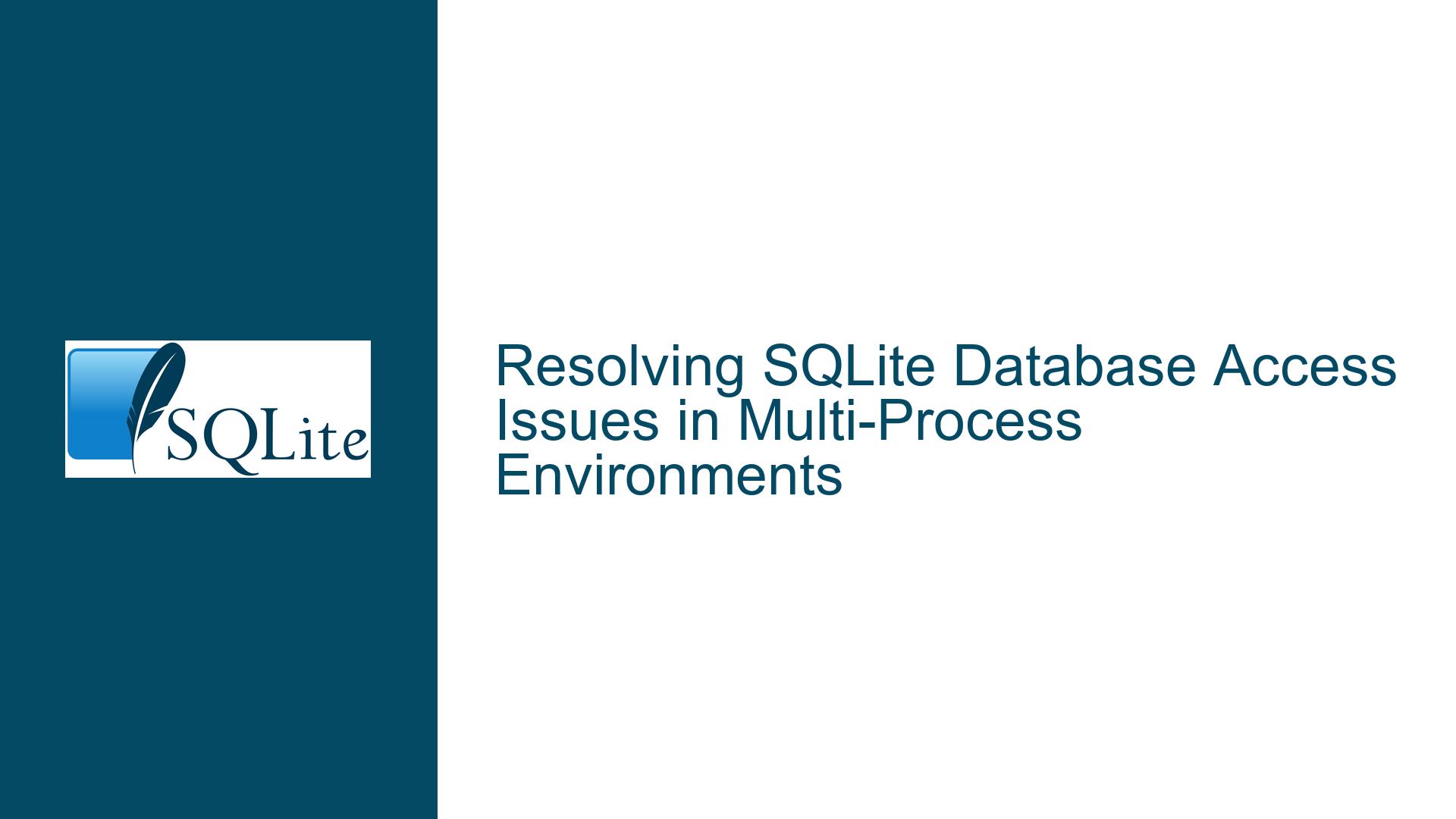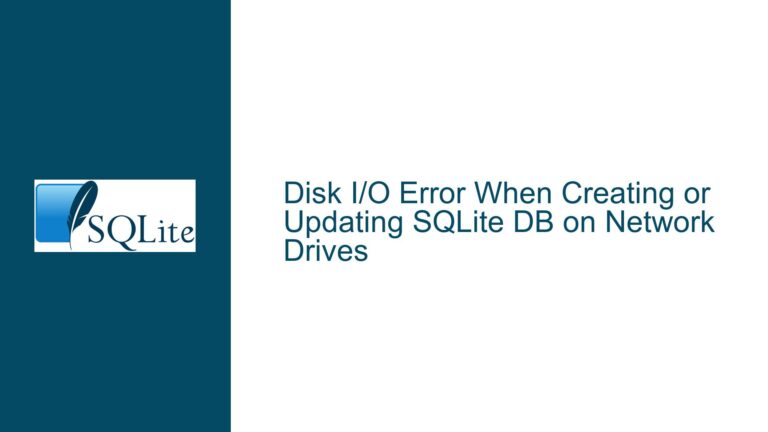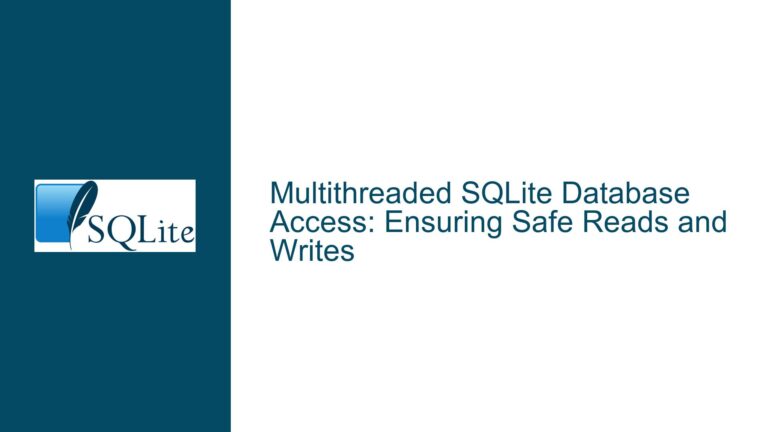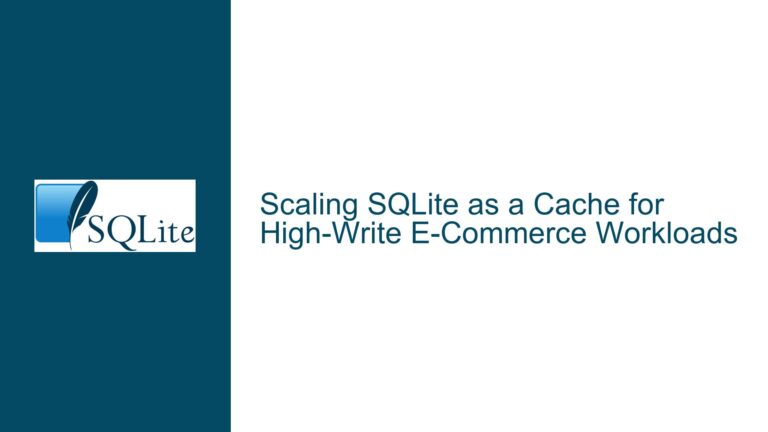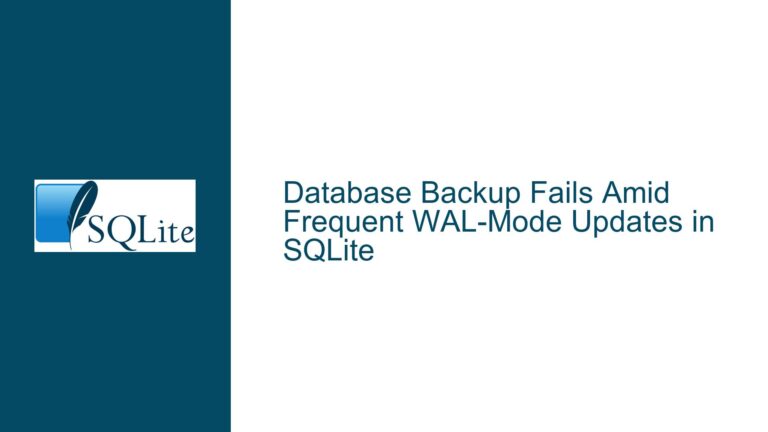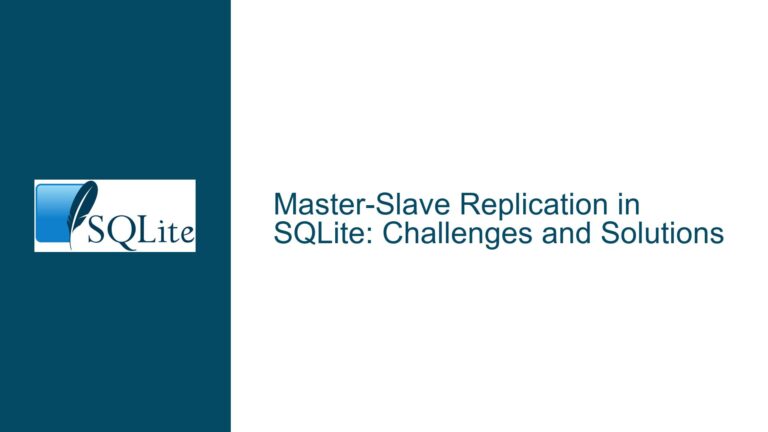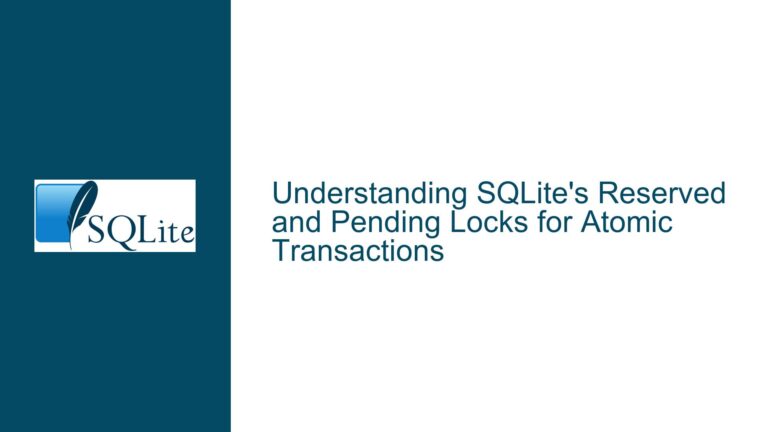Resolving SQLite Database Access Issues in Multi-Process Environments
Understanding SQLite’s Multi-Process Access Limitations
SQLite is a lightweight, serverless database engine that is widely used in applications where simplicity, reliability, and low resource consumption are paramount. However, one of the common challenges developers face when using SQLite in multi-process environments is ensuring that multiple processes can access the database simultaneously without causing performance degradation or unresponsiveness. This issue often arises when one process holds a long-running transaction, effectively locking the database and preventing other processes from accessing it.
The core of the problem lies in SQLite’s concurrency model. SQLite supports multiple connections from different processes, but it does not support multiple simultaneous write transactions. This means that if one process is performing a write operation, other processes attempting to write to the database will be blocked until the first transaction is completed. This behavior can lead to significant performance bottlenecks, especially in scenarios where one process is running a long-running task, such as a cron job, while another process, like a REST API, needs to access the database frequently.
Possible Causes of Database Unresponsiveness in Multi-Process Environments
The unresponsiveness of the database in multi-process environments can be attributed to several factors. One of the primary causes is the lack of proper transaction management. When a process initiates a transaction, it acquires a lock on the database, which prevents other processes from performing write operations until the transaction is committed or rolled back. If a process holds a transaction open for an extended period, such as during a long-running cron job, it can cause other processes to wait indefinitely, leading to unresponsiveness.
Another potential cause is the use of the default rollback journal mode in SQLite. In this mode, SQLite uses a single write-ahead log (WAL) file to manage transactions, which can lead to contention when multiple processes attempt to write to the database simultaneously. While SQLite’s WAL mode allows multiple readers and one writer to coexist peacefully, it still requires careful management of transactions to avoid blocking issues.
Additionally, the limitations of the underlying file system APIs can exacerbate these issues. For example, in the case of Deno, the file system APIs do not support file locking or memory-mapped files, which are essential for SQLite’s WAL mode to function correctly. This limitation can prevent SQLite from acquiring the necessary locks or memory-mapping files, leading to reduced concurrency and potential data integrity issues.
Troubleshooting Steps, Solutions & Fixes for Multi-Process SQLite Access
To address the issue of database unresponsiveness in multi-process environments, several strategies can be employed. The first step is to ensure proper transaction management. This involves breaking down long-running transactions into smaller, more manageable chunks. By committing transactions more frequently, you can reduce the amount of time that the database is locked, allowing other processes to access it more freely. For example, if you have a cron job that takes an hour to run, consider breaking it into smaller tasks that can be executed in shorter transactions. This approach will minimize the impact on other processes and improve overall database responsiveness.
Another solution is to enable SQLite’s WAL mode, which allows multiple readers and one writer to coexist without blocking each other. WAL mode can significantly improve concurrency and reduce contention in multi-process environments. To enable WAL mode, you can execute the following SQL command: PRAGMA journal_mode=WAL;. However, it is important to note that WAL mode requires support from the underlying file system APIs. If the file system does not support file locking or memory-mapped files, as is the case with Deno, WAL mode may not be available or may not function correctly.
If WAL mode is not an option due to file system limitations, you can consider using a different database engine that is better suited for multi-process environments. For example, PostgreSQL or MySQL are more robust database systems that support higher levels of concurrency and are designed to handle multiple simultaneous connections more effectively. While these databases are more resource-intensive than SQLite, they may be a better fit for applications that require high levels of concurrency and responsiveness.
In cases where switching to a different database engine is not feasible, you can implement a custom locking mechanism to manage access to the SQLite database. This approach involves using external tools or libraries to coordinate access to the database between different processes. For example, you could use a file-based locking mechanism or a distributed lock manager to ensure that only one process can write to the database at a time. While this approach adds complexity to your application, it can help mitigate the issues caused by SQLite’s limited concurrency model.
Finally, it is essential to monitor and optimize the performance of your SQLite database regularly. This includes analyzing query performance, indexing strategies, and database schema design to ensure that your database is operating efficiently. By identifying and addressing performance bottlenecks, you can improve the responsiveness of your database and reduce the likelihood of contention issues in multi-process environments.
In conclusion, while SQLite is a powerful and lightweight database engine, it has limitations when it comes to multi-process access. By understanding these limitations and implementing appropriate strategies, such as proper transaction management, enabling WAL mode, or using alternative database engines, you can overcome these challenges and ensure that your application remains responsive and performant in multi-process environments.
